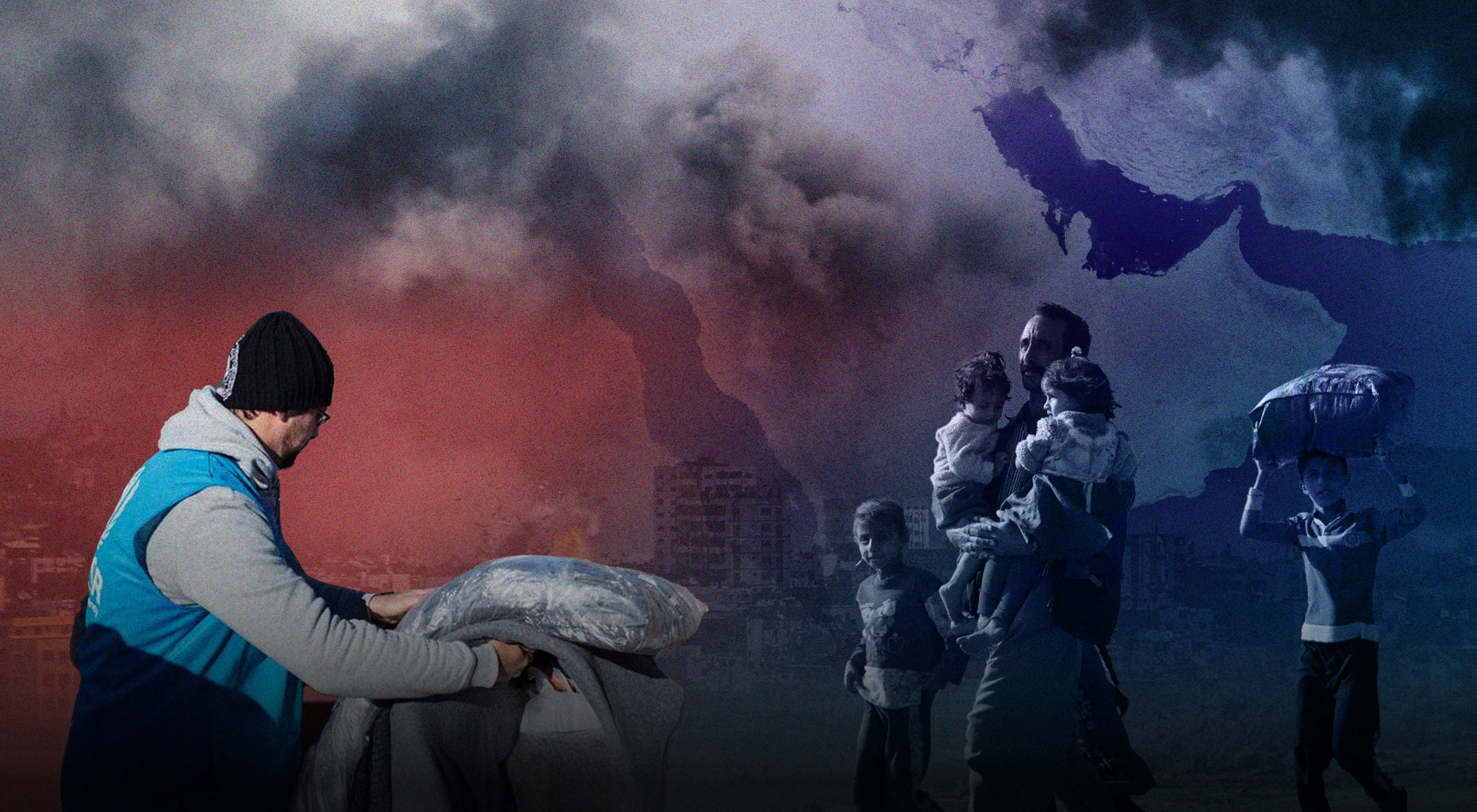In December 2018 the U.S. announced the withdrawal of troops from Syria following the “successful defeat” of Daesh/Islamic State (IS). In order to understand the rationale behind this decision, it is necessary to go back to 9/11, which marked a shift in U.S. foreign policy with the “war on terror” becoming the primary objective of U.S. overseas involvement. To that extent, current U.S. involvement in Syria and the Middle East at large can be seen as a linear continuation of this global “war on terror.” This linear continuation has occurred within a complex context of distinct, but inter-related conflicts in Syria and Iraq, involving states and armed non-state actors. A close examination of U.S. foreign policy in the region depicts an intricate strategy of responding to a range of threats that, often times, cannot be encapsulated with the “war on terror” paradigm. This strategy reveals divergences between the official rhetoric and on the ground operations, as well as the complex nature of the fight against Daesh that goes beyond Syria and does not end with the recently announced withdrawal of U.S. troops.
The U.S. has never had any particular interest in Syria per se. The Arab-Israeli war of 1973 put Syria on its foreign policy map in direct relation to maintaining the security of Israel. According to the U.S. Department of State, Syria remains designated as a state sponsor of terrorism since 1979. Throughout the late 1990s and early 2000s, the policy on Syria was primarily economic sanctions against a regime that had supported terrorist activities in the wider region. Following the outbreak of the civil war in Syria, in 2011, the U.S. engaged in a range of programs in support of the opposition forces, providing both lethal and non-lethal aid. From here U.S. policy in relation to Syria cannot be taken in isolation as the growth of the forerunners of Daesh in Iraq would soon have an impact on the Syria conflict. Once Daesh had established its presence in Syria the primary goal of the U.S. was focused on defeating the group, inhibiting its revival in any shape or form, and preventing its ideology from continuing to be a threat. As a more contemporary Al-Qaeda, the dangers that Daesh presents have been acknowledged and actively battled by the last three presidential administrations. With instability in Syria presenting an opportunity for Daesh to spread across the territory and take advantage of an increasingly desperate base of citizens, the U.S. had to focus on a military response. In total, over 16 000 airstrikes have been conducted in Syria by the U.S.-led coalition in addition to between 2 000 and 4 000 troops on the ground. The airstrikes also targeted the Al-Nusra Front (ANF) and the Khorasan Group, among others, as offshoots of Al-Qaeda.
While the military dimension of the U.S.-led coalition efforts against IS has fused both Iraq and Syria, especially along the Euphrates River valley, the official policy on Syria primarily focused on resolving the civil war and bringing about a political transition through peace talks not including President Assad. According to the State Department, “since the uprisings began in March 2011, the U.S. government has intensely pursued calibrated sanctions to deprive the regime of the resources it needs to continue violence against civilians and to pressure the Syrian regime to allow for a democratic transition as the Syrian people demand.” Moreover, in November 2012, the press statement by the State Department underscored the role of the U.S. in “supporting the National Coalition as it charts a course toward the end of Assad’s bloody rule and the start of the peaceful, just, democratic future that all the people of Syria deserve.” Formed in November 2012, the National Coalition of the Syrian opposition has been seen as the most legitimate and unified “coalition of opposition groups” that represents the Syrian people.
In the early years of the conflict, a series of U.S. special briefings on Syria underscored “plans for Syria’s transition from a brutal, corrupt, and self-serving family dictatorship” to a system “reflecting the rule of law,” especially in regard to minorities. The official stance on Syria stressed the urgent need for a political transition from a regime based on “sectarian game-playing.” Simply put, the official rhetoric supported regime change and the U.S. continued to supply various opposition groups that were fighting the Syrian regime. Whereas the U.S. military presence, the “boots on the ground” were sent to support local forces in fighting Daesh across both Syria and Iraq without distinction of borders. In the eyes of the U.S. Syria mattered on its own merit for supporting regime change. For countering Daesh, Syria was a part of a regional conflict with global impact.
Following the London 11 communique in 2014, a media note issued by the State Department reiterated the “[U.S.] support for moderate opposition … and associated moderate armed groups, holding the Assad regime accountable …, countering the rising forces of extremism, completing the removal of Syria’s chemical weapons, and stepping up efforts to deliver humanitarian aid … irrespective of the consent of the regime.” In response to Daesh, the U.S. established a coalition in 2014, the Combined Joint Task Force-Operation Inherent Resolve, to ensure that the U.S. did not unilaterally enter Syria. The U.S. recognized the global threat of Daesh and its ideology leading to the broad-based coalition of over 30 states providing a more effective instrument in response.
With Daesh reaching its peak in 2014, the U.S. strategy on Syria gained a more militaristic dimension, with a closer convergence of the official rhetoric and on the ground operations. A special briefing by senior State Department officials in September of 2014 stressed the “[U.S.] military support for on-ground partners [and] drying up the financial base of IS.” The coalition-led strategy also included “eliminating the foreign fighter flow into Syria and into Iraq … and de-legitimization – and this is key – of the very ideology on which these extremist groups breed.” This marks the sharpening of the U.S. fight against Daesh as but one layer of its policy on Syria, which continued to include the imperative of regime change. Following the meeting of the International Syria Support Group (ISSG) in Vienna (Austria) in 2016, the State Department reiterated the U.S. commitment to advancing a solution to a political transition following the cessation of conflict.
With the continuation of conflict in Syria and the recent change of administrations in the U.S., its foreign policy has moved away from advocating for a political transition and focused more on advancing the military operations against Daesh. In addition, with the change in the administration, the official rhetoric on Syria has merged with another foreign policy aim of countering Iran’s presence in Syria; which is a caveat that the previous administration had not engaged with.
In September 2018, the official State Department representative highlighted the success of the administration’s efforts to mobilize international and regional support for the critical stabilization efforts in north-eastern Syria. This is inherent in the wider U.S. policy objectives in Syria where the cessation of violence and a peaceful, political transition has been supported alongside the expansion of the war on terror with the coalition-based fight against Daesh and supporting UN-led stabilization efforts. According to the Special Presidential Envoy for the Global Coalition To Counter ISIS, “it’s not just about U.S. funding, it is about unlocking international reconstruction assistance which Syria is desperately going to need.” However, it remains unclear to what extent the coalition is going to be involved in reconstruction in post-conflict Syria, as well as continuing to counter the threats from Daesh. As the various conflicts in Syria appear to be coming to the end of military operations, U.S. and global policy need to adapt to the ever-complex context that exists.
The current divergence in official statements by the White House, the State Department and other U.S agencies, summarize the lack of linearity in the U.S. foreign policy on Syria since 2011. This also shows potential incongruences in the post-war reconstruction efforts and the U.S. role in them. This is a critical point to address given that the ideology of Daesh will continue to inspire extremists and terrorist attacks, and the state of Syria remains, in the view of the U.S., a state sponsor of terrorism. In short, post-war Syria seems strategic for both the U.S. and the world. Accordingly, both the regional and international powerhouses have been shadowing over the Syrian transition to peace, a prospect that is highly likely to include Iran, Turkey and Russia, in some capacity. Despite shifts in rhetoric and framing between administrations, U.S. foreign policy on Syria has not changed drastically since the beginning of U.S. involvement in 2011. The U.S. remains committed to the total defeat of Daesh, a de-escalation of conflict and a lasting ceasefire in Syria. This can be seen clearly in a statement by Special Representative for Syria Engagement James F. Jeffrey on November 14, 2018, stating, “We’re not about regime change. We’re about a change in the behavior of a government and of a state…” This also goes for the scaling back of Iran’s presence in Syria, as Jeffrey answered, “the Syrian Government invited them in; we expect the Syrian Government to ask them to leave.”
We are also seeing an expansion of the U.S. policy in Syria. The primary goal; namely, the fight against Daesh, has explicitly expanded to include subduing the influence and territorial pretensions of Iran across the Syrian territories. This expansion is also accompanied by wider geo-strategic concerns such as counterbalancing the Russian presence in the regime-controlled parts of Syria and subduing the Turkish presence in Syria. To attempt to separate these into neat, individual interests, however, is an oversimplification of what has grown into an extremely complex conflict – one with many regional and international actors with vested interests. These various actors with interests in Syria contribute to the intricate strategy that the U.S. has built and will likely continue to build upon; a strategy that cannot be encompassed by the “war on terror” that shapes much U.S. foreign policy towards the Middle East.
This clash of interests and competition for influence in post-conflict Syria does not match up with the U.S.’ history of involvement with the country. Though it is in the interest of the U.S. and its allies for Syria to become stable, the establishment of strong relations with a post-conflict Syrian regime and assuming a leadership position in a potential democratic transition has never been a part of America’s long-term plan. Although early foreign policy efforts loudly advocated for political transition and regime change, both being seen as an effective solution to countering Daesh and other extremist elements, there was never a plan set in place on what that would look like and what the U.S. role within the process would be. But with other states such as Iran, Russia and Turkey taking an active role in Syria now and likely in the future reconstruction, it appears the U.S. will need to address these further concerns.
With the withdrawal of its troops a possibility, questions can be posed about the role the U.S. will play in Syria’s future – namely in the rebuilding process once the conflict comes to a definitive end. It is important to note that the number of U.S. troops in Syria has been significantly lower than the amount of troops stationed elsewhere. The withdrawal of troops can be viewed as an acknowledgement of, “political stability… or some other political result” – with the presence of IS being the biggest threat to sustainable stability. As far as a military presence in Syria, troops are there for one primary mission, the “enduring defeat of ISIS/Daesh.” The enduring defeat of Daesh has been framed as a complete military victory over the group – with Daesh being treated as a territorial state. Without a systemic deconstruction of the ideology that has allowed the group to spread in numbers, military victories and the reclaiming of territory will not be enough for a permanent defeat. This has been concluded by a recent report by U.S. Intelligence, stating, “ISIS remains a terrorist and insurgent threat and will seek to exploit Sunni grievances with Baghdad and societal instability to eventually regain Iraqi territory.” As long as Daesh remains an active security threat (understood broadly) in the area, the U.S. will need to play a role in the region.
In the long-term, questions remain regarding the role the U.S. will play in the political future of Syria, with its military “ready to re-engage at all levels to defend American interests whenever necessary.” American leadership will have to balance securing its interests in the Middle East with domestic woes and maintaining public approval – with the hangovers of Iraq and Afghanistan still fresh in the minds of the American public. Post-conflict Syria will be strategic, with a delicate approach and dependence on multilateralism seemingly at the forefront of whatever approach is taken. The U.S will surely have a role to play in Syria’s political future post-conflict though what role it decides to play and how it aligns with its national interests remains to be seen.
Both the short-term and the long-term strategy will have to disengage the war on Daesh from the wider U.S. foreign policy on (post-conflict) Syria, given that the former is a more encompassing fight than the latter. There are also many questions on the future of U.S. involvement in Syria that remain unanswered, such as the continuation of the international coalition against IS, given the proclaimed victory over the insurgency, or how best to organize resources to ensure the defeat of the ideology of Daesh. The U.S. attention on the “enduring defeat” of Daesh is useful as it keeps the world focused on the threat this organization poses to the region and wider world. Military defeat alone is not enough and U.S. policy appears to recognize this, it necessary to ensure that U.S. foreign policy also stays focused on the post-conflict reconstruction of Syria and does not become subject to shifting tides.








